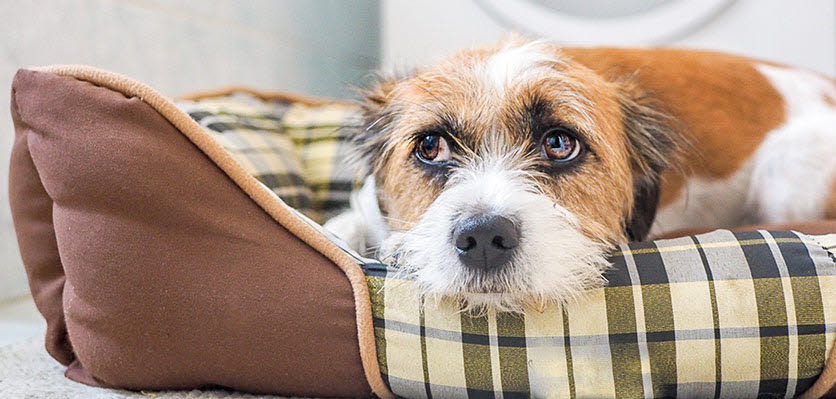Dog anal gland care

While not exactly a topic of polite conversation, anal glands play a role in your dog’s health and understanding the complications that can occur is an important part of dog ownership. Though much less common, cats can also suffer from anal gland issues, however, it is a condition more frequently seen in our canine companions.
What are anal glands?
Located inside a dog’s anus are two small sacs known as anal glands which release a brown, pungent discharge. Anal glands are often expressed during defecation and work as a way for dogs to leave scent trails as well as mark territory.
However, many domesticated animals are unable to completely express these glands naturally, creating the potential for the fluid to become thick and the sacs to become impacted.
Factors that can make dogs more susceptible to anal gland problems include having a history of chronic skin issues, being overweight, or having either softer stools or narrow anal gland ducts which prevents natural expression.
Signs of impacted anal glands
Impacted anal glands are extremely uncomfortable and dogs will show signs of this discomfort in their attempts to relieve the pressure, most commonly seen when they ‘scoot’ along the ground.
Other signs include licking or chewing their rear, show reluctance when walking, holding their tail down, or vocalising their pain when touched. If the anal glands are left untreated, it can lead to the formation of an abscess which can rupture through the skin, causing bleeding which is often mistaken as being rectal bleeding or blood in the stools. At this point, veterinary care of antibiotics and pain relief is needed, and possibly surgical intervention to drain and clean the infected glands.
How to empty anal glands
Anal glands can be expressed either internally, by inserting a gloved, lubricated finger into the anus to apply pressure to the glands, or externally by manipulating the sacs from the outside into a tissue. While some owners may want to learn to do this themselves, it is generally a messy task best left to the professionals as it often requires more than one person and must be performed correctly to prevent injury. Your local veterinarian team will be able to perform this service for you and ensure that the discharge is normal and healthy.
How to prevent anal gland issues
Each dog is unique in how often they need their glands expressed, with some dogs not needing assisted expression at all. It is important to note that frequent assisted expression can do more harm than good by causing scarring that damages the anal gland ducts making it harder for future expression.
However, a non-invasive way to help your dog avoid anal gland impaction is to introduce more fibre to their diet, either through a high-fibre food or by adding a fibre supplement. This helps to bulk up their stool to encourage natural expression. In severe cases, a procedure called an anal sacculectomy can be performed which involves the permanent removal of the anal glands. While fairly straight forward, there is potential for complications including nerve damage to the area which can result in faecal incontinence.
If you are concerned that your dog is showing signs of anal gland discomfort or you would like more information about any of the topics raised in this article, it is worth consulting your vet. The appointment may be momentarily uncomfortable for your pooch but you will both feel better for it in the long run!
